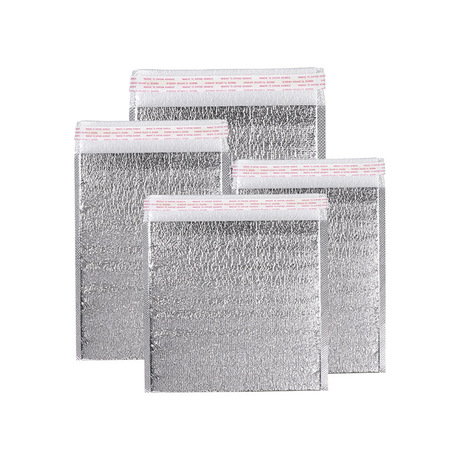How to Solve the “Growing Pains” of Pre-made Dishes?
Recently, the once-booming pre-made dish market has encountered a cold wave. Why is it that in many countries with “strict” food standards, the market penetration rate of pre-made dishes is as high as 70%, while there are so many concerns in China? Isn’t the adoption of modern, industrial, and standardized production processes for pre-made dishes precisely providing strong support for the high-quality development of the food industry? How much impact does the school incident have on pre-made dishes? What challenges does the pre-made dish industry face? How can companies grasp long-term opportunities? Reporters from Southern Finance conducted in-depth visits to enterprises and interviewed experts from various fields, analyzing the pre-made dish industry’s trends from multiple dimensions such as consumption, standards, certification, traceability, overseas expansion, equipment, preservatives, restoration, and repurchase rates. We welcome readers to join the discussion.
Recent Hot Topic: Pre-made Dishes
Whether it is the controversy caused by “pre-made dishes entering campuses” or the statements from relevant officials interviewed by Xinhua News Agency, the hotness and attention on pre-made dishes are evident. In the secondary market, the previously soaring concept stocks of pre-made dishes have shown a significant downward trend. Namun, in terms of exports, the upward trend of pre-made dishes has not changed; many companies are already preparing for the production of large festive dishes for the Chinese New Year. Some companies claim, “This year’s large festive dish orders are booming, and pre-made dishes will become a highlight of this year’s New Year’s feast.”
Due to its ability to deeply integrate primary, secondary, and tertiary industries, and being an important means to achieve rural revitalization, coupled with the strong market demand base and continuous technological innovation, the future development of pre-made dishes is still widely optimistic. tahun ini, pre-made dishes were included in the Central Document No. 1; on July 28, the National Development and Reform Commission’s “Measures to Restore and Expand Consumption” also mentioned “cultivating and developing pre-made dishes” again. Many local governments have also supported pre-made dishes as a “new track” for upgrading the food industry.
Current Critical Turning Point in the Pre-made Dish Industry
According to a report by Xinhua News Agency, relevant officials from the Ministry of Education mentioned, “after research, given that pre-made dishes currently lack a unified standard system, certification system, and traceability system, which are effective regulatory mechanisms.” The industry believes that the “standards,” “certification,” and “traceability” systems are key paths for pre-made dishes to move towards healthy eating and are also crucial guarantees for consumer trust in pre-made dishes.
Do Food Production Enterprise Standards Apply to Pre-made Dishes?
Pre-made dish products from companies such as Guolian Aquatic, Guangzhou Restaurant, and Tang Shunxing are exported to Europe, America, Japan, South Korea, and Hong Kong and Macau. What are their standards? How can we establish unified standards, promote certification mechanisms, strengthen traceability management, and promote the healthy and sustainable development of the industry, making pre-made dishes “safe, nutritious, and transparent”?
Why Lack Confidence? The Need for National Standards in the Face of Weak Standards
No rules, no standards.
In the early stages of industry development, the lag in standards is inevitable. In the current context of “pre-made dishes entering campuses” causing concerns, promoting the industry towards standardized and regulated development has become a societal consensus.
Namun, the current pre-made dish standards have regional limitations or lack mandatory measures, leading to limited actual regulatory effects.
In 2022, many departments, industry organizations, and enterprises applied for and issued numerous standards related to pre-made dishes. According to data from the National Standards Information Service Platform, as of November 2022, there were 69 existing pre-made dish standards nationwide, with Shandong, Guangdong, and Beijing issuing the most, akuntansi untuk 84%.
Overall, existing standards cover various aspects of pre-made dishes, including raw material specifications, processing, storage, and logistics. Pre-made dish terminology, definitions, quality evaluation, and safety standards are also included.
As the pre-made dish industry continues to grow, its standards are becoming more detailed. There are standards for the entire industry, as well as specific standards for different types of pre-made dishes such as “cuisine-specific pre-made dishes,” “meat products pre-made dishes,” and “specific pre-made dishes,” down to each dish.
Misalnya, the standard for the popular dish “sour fish” (T/SPSH 36-2022) specifies terms, definitions, production processes, consumption methods, sales, and traceability recalls.
Despite the surge in standard-setting, there is still no consensus on the most basic questions: “What is a pre-made dish?” and “How should pre-made dishes be classified?”
What Exactly Is a Pre-made Dish?
People have different views on pre-made dishes. Research by Southern Finance reporters found that the definition of pre-made dishes varies from person to person and different documents. Even the “4 immediates” concept (“ready-to-eat, ready-to-cook, ready-to-heat, ready-to-assemble”) is not widely recognized. Whether simple items like steamed buns, meatballs, ham, canned food, meal kits, semi-finished dishes, and central kitchen supplies are considered pre-made dishes is still debated.
Many interviewees believe that pre-made dishes emerged due to market demand but remain a vague market concept with no clear academic or legal definition. Due to the unclear concept, many products are labeled as “pre-made dishes” to enter the market, regardless of whether they meet health and nutrition requirements.
Because of the lack of clear definitions and the lack of legal binding force for group standards, pre-made dishes are widely regarded as operating under “weak standards.”
According to Dong Huaqiang, Chairman of the Guangdong-Hong Kong-Macao Greater Bay Area Food and Health Alliance and President of the Foshan Food Safety Association, to make the pre-made dish market healthier, we first need to clarify the concept and definition of pre-made dishes. He believes that food safety assurance for pre-made dishes is not a new issue but a new form of ordinary food safety assurance.
This view is confirmed by relevant market supervision and management departments. Saat ini, the food safety regulation for pre-made dishes is primarily based on existing food laws and standards. This means that the safety regulation of pre-made dishes is already part of the regular food safety regulatory work.
Hong Tao, Director of the Institute of Commercial Economics at Beijing Technology and Business University, said that because the pre-made dish industry chain is long and highly complex, involving multiple industries, models, formats, and scenarios, it is difficult for pre-made dishes to achieve sustainable development without a unified standard system.
Selain itu, there is a lack of applicable current standards for refrigerated pre-made dishes. According to Xu Hao, an expert of the Prefabricated Food Industry Chain Expert Committee of Jiangsu Province New Food Cluster and Executive Vice President and Secretary General of Jiangsu Province Catering Industry Association, although frozen pre-made dishes can refer to frozen food standards, these standards may not fully meet the production and quality control requirements of pre-made dishes.
Mou Dongliang, Assistant President of the World Federation of Chinese Catering Industry, also believes that current standards mostly provide simple descriptions of the product attributes of pre-made dishes and lack mandatory and comprehensive regulations, which cannot fully meet consumers’ expectations for the quality of pre-made dishes.
In fact, representatives of many pre-made dish companies also stated that considering factors such as cost reduction, efficiency improvement, and taste guarantee, pre-made dishes in various consumption scenarios need to establish a comprehensive, scientific, and operable standard system covering all aspects from raw material procurement to production, packaging, and transportation. This unified operating guide should cover the entire pre-made dish industry chain, clarify industry boundaries, and help ensure the quality and safety of pre-made dishes.
“In the absence of clear national standards, leading enterprises should take the initiative to promote the formulation of industry standards for pre-made dishes,” said Liu Weifeng, General Manager of the Guangdong Company of the Aquaculture Division of Guangdong Hengxing Group. Xue Wei, Vice President of CP Group (Guangdong) Co., Ltd., revealed that CP Group is establishing a complete pre-made dish industry chain, including breeding and production processing.
Saat ini, as most enterprises in the industry are small and medium-sized, some find it difficult to meet the basic hardware and software requirements for pre-made dishes. Karena itu, Tan Haicheng, Vice President of the China Culinary Association and Executive President of the Guangdong Catering Service Industry Association, said, “The current standard system needs to comprehensively consider guidance, operability, and enforceability. Establishing an authoritative and mandatory national standard system for pre-made dishes is urgent, making it easier for enterprises of different scales to implement.”
Namun, the formulation of national unified standards is often difficult to quickly introduce due to multiple interests, regional cultural and environmental differences, and the complexity and technical difficulty of pre-made dish production. Lebih-lebih lagi, even if unified standards are formulated, effective implementation and supervision must be ensured, which is undoubtedly a daunting challenge.
How to Make Pre-made Dishes More Nutritious? Promoting Quality Certification Systems Is a Key Issue
In September, the China Quality Certification Center held the first batch of pre-made dish product certification award ceremonies. From source to end, from raw materials to finished products, from production to sales, the certification aims to adopt full-process monitoring to strictly control the quality and safety of pre-made dishes, leading to quality upgrades in the pre-made dish industry.
Although the establishment of a pre-made dish certification system is crucial, a certification mark does not represent the entirety of product quality and safety. The industry needs to seriously consider how to incorporate regulatory requirements into the certification process to ensure absolute food safety.
Xu Yujuan, Director of the Sericulture and Agricultural Products Processing Research Institute of the Guangdong Academy of Agricultural Sciences and President of the Guangdong Pre-made Dish Industry
Cited from http://www.stcn.com/article/detail/1001439.html






.jpg)












